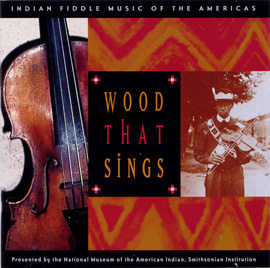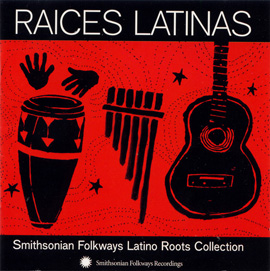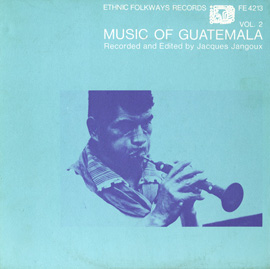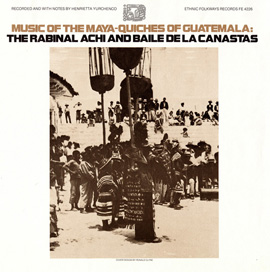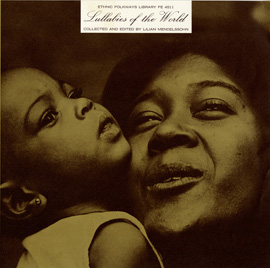Summary
This unit contains a total of three lesson plans, which focus on marimba music of indigenous people of Guatemala. Activities include attentive, engaged listening experiences, which lay the groundwork for actually performing an arrangement of the listening example. A video segment provides a springboard into a discussion of marimba music in the context of Guatemalan cultures.
Suggested Grade Levels: 5-6, 7-8
Country: Guatemala
Region: Central America
Culture Group: Chorti Indians
Genre: Marimba
Instruments: Shakers, drums, marimbas, recorders
Language: Spanish
Co-Curricular Areas: Social Studies, Geography, Mathematics
National Standards: 2, 5, 6, 8, 9
Prerequisites: For Lesson Segment 2, Basic treble clef note reading skills and basic recorder and marimba skills
Objectives:
- Identify repeating rhythmic pattern in the bottom marimba part using various methods to enact it.
- Introduce students to alternating 6/8- 9/8 meters using attentive and engaged listening.
- Listen to CD track #105 while following along with score.
- Read parts and play on instruments.
- Increase awareness of the historical roots of marimba music in Guatemala.
- Compare Mayan indigenous piece to “City Style”
Material:
- CD “Music of Guatemala” Vol. 1, track 105, Marimba and Clarinet - Chorti Indians
- Shakers
- Ribbons
- Marimba & Recorder Arrangement by Melanie West
- Grand Staff Marimbas and Treble Clef Recorders
- Carlos Mejía, Katalina Trujillo, Víctor Zacbé Pichardo, and Javier Saume demonstrate Guatemalan and Mexican marimba traditions video (Smithsonian Folklife Festival 2006).
Lesson Segments:
- Attentive and Engaged Listening to the Music of the Chorti Indians of Guatemala (National Standards 5, 6, 8, 9)
- Playing the Music of the Chorti Indians on Marimba and Recorder (National Standards 2, 6)
- Marimba Music as a Part of Guatemalan Culture (National Standards 6, 9)
Lesson Segment 1: Attentive and Engaged Listening to the Music of the Chorti Indians of Guatemala
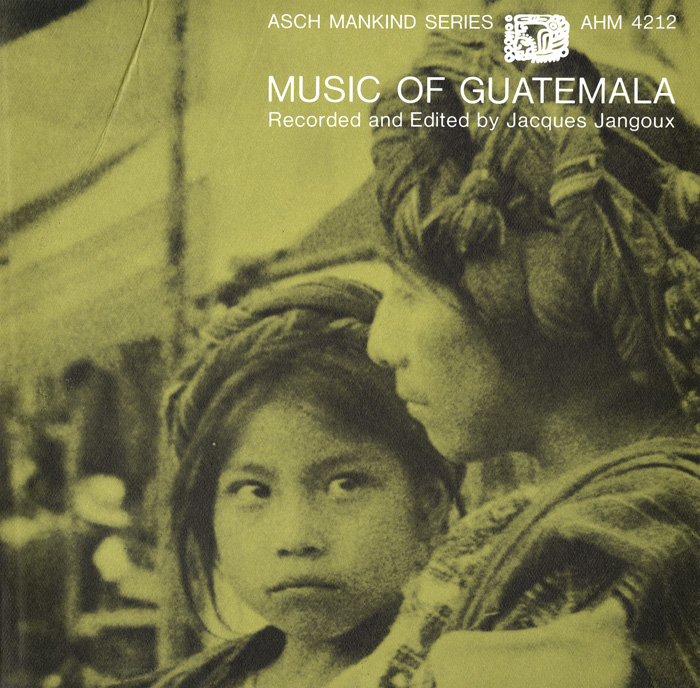
“Marimba and Clarinet”
from Music of Guatemala, Vol. 1 (1969) | FW04212
Procedure:
1. Make sure you the CD player works, is set to an appropriate volume and is accessible from teaching area.
2. Set shakers, red ribbons, and blue ribbons so they are separated and ready to hand out efficiently.
3. Write the following model on the board:
123 456
123 456 789
4. While listening to the recording, ask students to listen to the rhythm of the lowest marimba part (eight rest, eighth note, eighth note) and tap the rhythm (two fingers into the palm of the hand). Lead students in varying the method of rhythmicking ie. clapping, partner clapping, marching, or patting head, shoulders, knees.
5. Divide the class into three parts, group I, group II, group III. Pass out shakers to group I and instruct them to continue the rhythm with the shakers. Instruct groups II and III to continue the rhythm with body percussion.
6. Count out loud for eight measures, while pointing and following along with the numbers on the board (123 456 in the 6/8 measures and 123 456 789 in the 9/8 measures). Invite students to join in counting out loud.
7. Say, “I am going to show you a different way to count”. Circle each grouping of three numbers. Ask, “How many circles are in the first line?” Students respond, “Two”. Write the numbers 1 and 2 over the circles in the first line. Ask, “How many circles are in the second line?” Students respond, “Three”. Explain that 6/8 and 9/8 are compound meters, which means you can count them in two ways. Say, “Now I am going to show you the other way to count”.
8. Demonstrate counting another 8 measures: 1 -2 in the 6/8 measures and 1 -2 -3 in the 9/8 measures. Repeat, making circles to the beat with red ribbon in one hand in 6/8 measures and with blue ribbon in the other hand in 9/8 measures. Direct students to join in counting out loud.
9. Instruct students with shakers (group I) to hand them to group II, and to pick up a red ribbon. Pass out blue ribbons to group III. Stand in a circle if space allows and play the recording from the beginning. Lead the group while counting out loud, directing the red ribbons to circle in 6/8 measures and blue ribbons to circle in the 9/8 measures and the shakers to shake the original pattern.
10. Trade ribbons and shakers until each group has had at least one turn with each element.
Extensions:
- Draw from student ideas to vary the movements with the ribbons for example: circle or wave above head, figure eight, snake on floor.
- Draw from student ideas to vary rhythmicking by using different instruments or body percussion.
- Draw from student ideas to vary rhythmicking by using different instruments or body percussion.
Assessment:
- Students will be able to count compound meters in two ways and move creatively to the alternating 6/8 - 9/8 pattern.
- Students will be able to keep time with the low marimba line (eighth rest, eighth note, eighth note) using a variety of rhythmicking methods.
Lesson Segment 2. Playing the Music of the Chorti Indians on Marimba and Recorder
Procedure:
1. Listen to CD (track #105) two or three times while following along with the score. Focus each listening by pointing out different musical elements such as out repeated rhythmic motives and changing compound meters. Instruct students to tap the beat with their finger while they follow along with the music while listening.
2. Rehearse Marimba B while others lightly tap the rhythm of their own parts on their palms with two fingers.
3. Add Marimba A while recorder lightly taps, then add recorder.
4. Listen to CD one more time instructing students to focus on tempo and stylistic elements. In particular, students listen for articulation of the clarinet, steady beat, and a feeling of continuous motion of the marimba.
5. Play again trying to approximate the recording as closely as possible.
Extensions:
- Trade instruments and parts.
- Sing parts and make up words.
Assessment:
- Students will be able to keep time with the CD while tapping the beat.
- Students will be able to approximate the sound of the recording by playing the arrangement on their instruments.
Lesson Segment 3. Marimba Music as part of Guatemalan Culture
Procedure:
1. Watch the Guatemala segments of video (1st half).
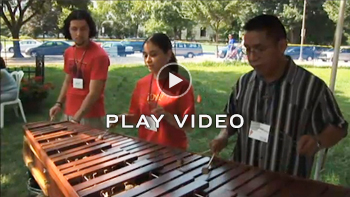
Video: Carlos Mejía, Katalina Trujillo, Víctor Zacbé Pichardo, and Javier Saume demonstrate Guatemalan and Mexican marimba traditions
2. Class Discussion:
- a. What does indigenous mean?
- b. Why do you think that indigenous music is important to the people in Guatemala?
- c. Why else is this music significant to the people of Guatemala?
- d. How is the “City Style” different from the first example?
Assessment:
- Students will have a better understanding of marimba music as it relates to Guatemalan Culture.
Additional information:
The music presented in this album is typical of rural Guatemala. Most of the inhabitants of this area are Indians of Mayan descent, but almost everywhere in the Guatemalan countryside one can also find Ladinos: persons, of whatever descent, who speak Spanish in their homes and have adopted the Ladino way of life, which is mostly Spanish. It is not completely Spanish, however, because both the cultures of rural Guatemala are the result of the confrontation over several centuries of two very different civilizations, the indigenous Mayan, and the Western, introduced by the Spanish in the 16th century. Both cultures have borrowed traits from the other, and this is nowhere more evident than in their music, which is a mixture of European, Indian, and perhaps also African elements...
Jacques Jangoux



